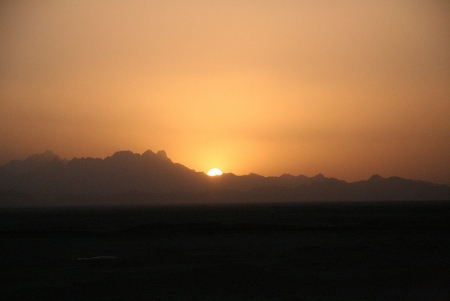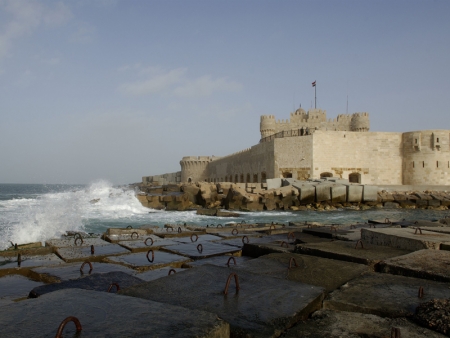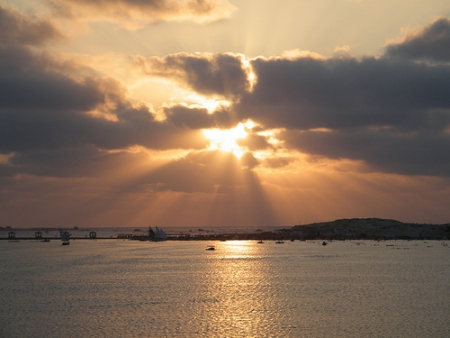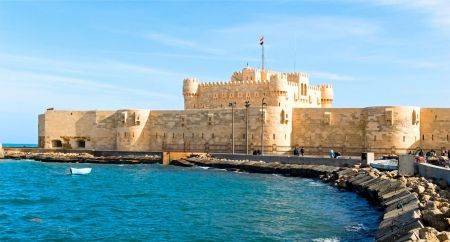-
Home
- Egypt
- Wiki Travel
- Egypt Tourist Attractions
- The Mediterranean Sea Facts
The Mediterranean Sea Facts

How wide is the Mediterranean Sea?
The Mediterranean Sea Facts (35 degrees north, 18 degrees east) is a sea of the Atlantic Ocean almost completely enclosed by land: on the north by Europe, on the south by Africa, and on the east by Asia. It covers an approximate area of 2.5 million km (965,000 mile), but its connection to the Atlantic (the Strait of Gibraltar) is only 14 km (9 mi) wide.
In oceanography, it is sometimes called the Eurafrican Mediterranean Sea or the European Mediterranean Sea, to distinguish it from Mediterranean seas elsewhere
It is linked to the Atlantic Ocean (at the Strait of Gibraltar), the Red Sea and Indian Ocean (by the Suez Canal), and the Black Sea (at the Dardanelles and Sea of Marmara).
The Mediterranean Sea covers an area of 2,509,000 sq km (969,000 sq mi). It has an eastern to western extent of 3,900 km (2,400 mi) and a maximum width of 1,600 km (990 mi). Generally shallow, with an average depth of 1,500 m (4,900 ft), it reaches a maximum depth of 5,150 m (16,896 ft) off the southern coast of Greece; Major subdivisions include the Adriatic Sea, Aegean Sea, Balearic Sea, Tyrrhenian Sea, and Ionian Sea and Ligurian sea, its coastline extends 46,000 km/28,580 mi, running through 22 countries. It is highly polluted.
The Mediterranean Sea is of great political importance as a maritime outlet for the countries of the former Union of Soviet Socialist Republics, via the Bosporus, Sea of Marmara Dardanelles, and Black Sea and for European and American access to the petroleum of Libya and Algeria and the Persian Gulf region, via the Suez Canal and overland pipelines
It was a superhighway of transport in ancient times, allowing for trade and cultural exchange between emergent peoples of the region the Mesopotamian, Egyptian, Semitic, Persian, Phoenician, Carthaginian, Greek and Roman cultures. The history of the Mediterranean of western Known as the cradle of civilization, the Mediterranean was opened as a highway for commerce by merchants trading from Phoenicia. Over succeeding centuries Carthage, Greece, Sicily, and Rome were rivals competing for dominance of its shores and trade.
It was later dominated by the Byzantine Empire and the Arabs; between the 11th and 14th centuries, Barcelona and the Italian city trading states, such as Venice and Genoa, dominated the Mediterranean. Control of Mediterranean Sea islands, coasts, and trade routes was vital during both World Wars, leading to important campaigns.
Since World War II the region has been of great strategic importance to the USA and Western European countries (NATO).
Enjoy more popular tours to one of the most amazing cities on the Mediterranean Sea ' Alexandria ' with Memphis Tours, Check here
Customize Your Dream Vacation!
Get in touch with our local experts for an unforgettable journey.
Plan Your TripEgypt Travel Guide
Egypt Oases
- Gara Cave
- Al-Deer
- Badr's Museum
- Bagawat
- Black desert
- Cleopatra bath
- Great Sand Sea
- Mizawaka
- Monastery of Anba Bishoy
- Mountain of the Dead in Siwa | Gebel al-Mawta
- Qarun Lake
- Roman Temple in Deir El-hagar
- Temple of Alexander the Great
- Temple of Amon
- Temple of Dush
- Temple of Hibis
- Temple of Nadura
- The Crystal Mountain | Bahariya Crystal Mountain
- The Monastery of Abu Makar (Makarios) | Egypt
- The Monastery of Baramus | Egypt
- The Monastery of El Suryan | Cairo Attractions
- Therapy in Siwa Oasis
- Valley of Al-Haiz
- Valley of the Golden Mummies
- Wadi Al- Rayan, Protected Area | Fayoum, Egypt
- Wadi El-Natroun | The Monasteries of Wadi El Natrun
- The White Desert in Egypt
- Fayoum Bird-watching Guide
Ports of Call
Red Sea and Sinai
Famous Mosques in Egypt
Transportation guide in Egypt
Egypt Tourist Attractions
Egypt Pyramids
- Djedefre Pyramid | Abu Rawash
- Abu Sir | Egyptian Necropolis & Pyramids
- King Snefru's Pyramid | Egypt
- Old Kingdom Pyramids | Ancient Egypt
- Pyramid Complex of Pepi I
- Pyramid of Amenemhat III
- Pyramid of lahun | Egypt Pyramids
- Pyramid of Meidum
- Pyramid of Neferhetepes | Egypt Pyramids
- Pyramid of Netjerkhet | Egypt Pyramids
- Pyramid of Neferefre
- Pyramid of Sahure | Egypt Pyramids
- Pyramid of Sekhemkhet
- Pyramid of Sesostris III
- Pyramid of Teti | Egypt Pyramids
- Pyramid of Userkaf | Egypt Pyramids
History of Egypt
- The False Doors | Ancient Egypt Secrets
- Egyptian Canopic Jars: What are Canopic Jars?
- Holy Family in Egypt
- king khufu (Cheops) | Kings of Ancient Egypt
- Khafre Statue | King Khafre Pyramid
- Who built the first pyramid in Egypt
- Menkaure (Mykerinos) Pyramid | King Menkaure
- Ramesses IV | Ramses iv Tomb
- Ramses IX Tomb
- The Divine Triad of Dendera
Aswan Attractions
Luxor Attractions
Alexandria Attractions
Cairo Attractions
- Famous Bab al Futuh
- Al-Tannoura Egyptian Heritage Dance Troupe
- Saints Sergius and Bacchus Church
- Abusir Pyramids & The City of The Dead Egypt
- Agricultural Museum Egypt, Cairo
- AL Fustat Historical City
- Bab El Nasr Cairo City Gate
- Beit Al Sennari or Al Sennari House in Cairo
- The Cairo Tower
- Birqash Camel Market in Cairo
- Coptic Cathedral in Abbasiya
- Egyptian Museum Guide
- El Mosky Cairo | Bazaars & Souks
- King Tutankhamun Treasures: Inside the World of Egypt’s Most Famous Pharaoh
- The Mosque of Muhammad Ali Pasha in Cairo
- Royal Mummy Room in The Egyptian Museum
- The Pharaonic Village
- The Great Sphinx of Giza
- Babylon Fortress Facts
- Solar Boat Museum
- Valley Temple of Khafre
- St Mary Egypt Orthodox Church
- Verdi Aida Opera Show in Giza Pyramids Egypt
Enjoy Alexandria Day Tour. See catacombs and Qaitbey Citadel, built on the site of the legendary Lighthouse. Visit the great Bibleotheca Alexandria and enjoy a fresh seafood lunch on the Mediterranean.
Plan Your Trip!
You Might Also Like

Learn more about The Eastern Desert Egypt is located southeast of the Nile River delta east of Egypt, which is also called the 'Arabian Desert'.

The Mediterranean Sea is a sea of the Atlantic Ocean almost completely enclosed by land. Read more about Mediterranean Sea Facts.

Marsa Matrouh Egypt has a beautiful 4.5 miles beach with almost pure white sands. Click here to know more facts about Marsa Martouh.

